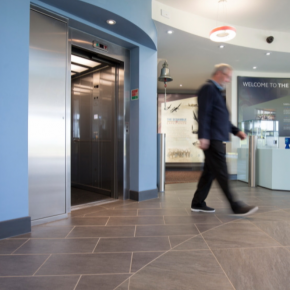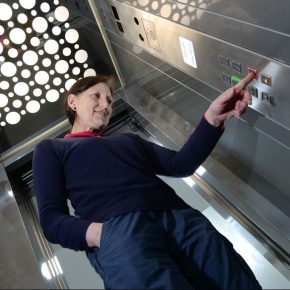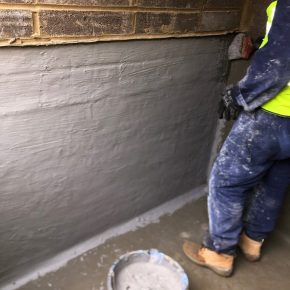
Stannah: The importance of lift servicing for lift owners
Being a responsible lift owner or building manager, you have a duty to ensure that your lift is safe to use. With this in mind, it’s critical that lift servicing is carried out regularly. How often lifts require inspecting or servicing depends on the type, usage frequency and the number of floors. A lift, throughout its life, should require regular lift servicing, routine lift inspections (statutory or otherwise) and a programme of planned preventative maintenance in place. Stannah has more…
How often should a lift be serviced?
While current UK law requires a lift service or maintenance visit at least every six months if the installation is carrying passengers and once every 12 months if the lift is used only for goods, these are minimum requirements and need viewing as such.
Low usage passenger carrying lifts may only require two services a year to fulfil legal requirements. In contrast, high-frequency use installations in larger and more frequented premises may need more regular servicing to prevent costly breakdowns and possible interruptions to service.
As lifts contain mechanical components, they are prone to wear and tear. In addition, electronic systems may need re-programming, and safety systems should be regularly checked. Sometimes additional preventative maintenance may be prudent and necessary to achieve optimum performance and minimise the risk of downtime.
What is lift servicing?
Lift servicing is where an engineer undertakes a planned preventative maintenance programme as agreed with you; doing so helps to prevent costly breakdowns through regular checks and replacement of worn parts to keep your lift performing at maximum efficiency. Most independent lift companies, like Stannah, maintain and service all types, makes and models of lifts.
What type of checks are involved?
The regular checks include detailed inspections of the interior and exterior of the lift car, as well as checks in the machine room or control panel, the pit, and the lift shaft. Depending on the service interval, a standard service visit from a reputable provider could include some of the following checks:
– Landing and car doors and their interlock
– Shaft structure
– Main drive system components
– Signs, locks and keys
– Suspension ropes and chains
– Overload detection devices
– Electrical devices (including earthing, earth bonding, safety devices, selection of fuses, etc.)
– Braking systems (including buffers and overspeed devices)
– Alarms and communication equipment
– Lubrication and smooth functioning
– Emergency backup and communication system
This list is not exhaustive. Hydraulic installations and traction systems may require further system tests.
What does a service visit involve?
During a service visit, an engineer will check the safety features of the lift, as well as clean, lubricate and adjust all components for optimum performance. A Stannah engineer would then complete a service screen on his laptop, stating the work carried out and detailing any comments, such as suggested repairs or works of improvement not covered by the contract. A report should be issued after each engineer visit as a maintenance record.
What legislation do I need to comply with?
Insurers will typically require copies of documentation and service history, plus compliance with the following current legislation;
LOLER (Lifting Operations and Lifting Equipment Regulations 1998)
The Equality Act 2010 (to accommodate the mobility needs of disabled persons)
PUWER (The Provision and Use of Work Equipment Regulations 1998)
Will my lift be out of action while an inspection or service is taking place?
Yes. The engineer will need to check many items within the shaft/structure and motor room, so the lift will be ‘out of service’ while the engineer is on-site.
Visit Supplier's page
Latest news

31st March 2025
Stannah Lifts urges lift owners to prepare for the PSTN switch over
Stannah Lifts, a leading provider of lift solutions, is calling on businesses and facility managers to act now and upgrade their lift communications systems to ensure they are ready for the UK’s new high-speed, GSM digital network.
Posted in Accessibility, Articles, Building Industry News, Building Products & Structures, Building Regulations & Accreditations, Building Services, Facility Management & Building Services, Health & Safety, Information Technology, Interiors, Lifts, Restoration & Refurbishment, Retrofit & Renovation
31st March 2025
Delta: Lift Pit Waterproofing - Type A solutions
Delta Membranes has recently worked on a project whereby the scope was to provide a waterproofing solution to a newly constructed lift pit for a four-storey residential block.
Posted in Articles, Building Industry News, Building Products & Structures, Building Services, Case Studies, Concrete, Cement, Admixtures, Damp & Waterproofing, Facility Management & Building Services, Restoration & Refurbishment, Retrofit & Renovation
31st March 2025
HMG Paints renew partnership with Belle Vue Aces Speedway
HMG Paints has renewed its partnership with Belle Vue Aces for the 2025 season. This year marks a particularly exciting chapter for Belle Vue Speedway, as the club and National Speedway Stadium will host an electrifying double-header of the FIM Speedway Grand Prix in 2025.
Posted in Articles, Building Industry News, Building Products & Structures, Case Studies, Interiors, Paints, Paints, Coatings & Finishes, Posts, Restoration & Refurbishment, Retrofit & Renovation
31st March 2025
Ideal Heating sponsored CIBSE BPA Engineer of the Year announced
As the sponsor of the Engineer of the Year award at the Chartered Institution of Building Services Engineers (CIBSE) Building Performance Awards, Ideal Heating Commercial was delighted to present the award to Volkan Doda, Head of Design Technologies at Atelier Ten.
Posted in Articles, Awards, Building Associations & Institutes, Building Industry Events, Building Industry News, Building Products & Structures, Building Services, Facility Management & Building Services, Heating Systems, Controls and Management, Heating, Ventilation and Air Conditioning - HVAC, Pipes, Pipes & Fittings, Plumbing, Retrofit & Renovation
 Sign up:
Sign up: 